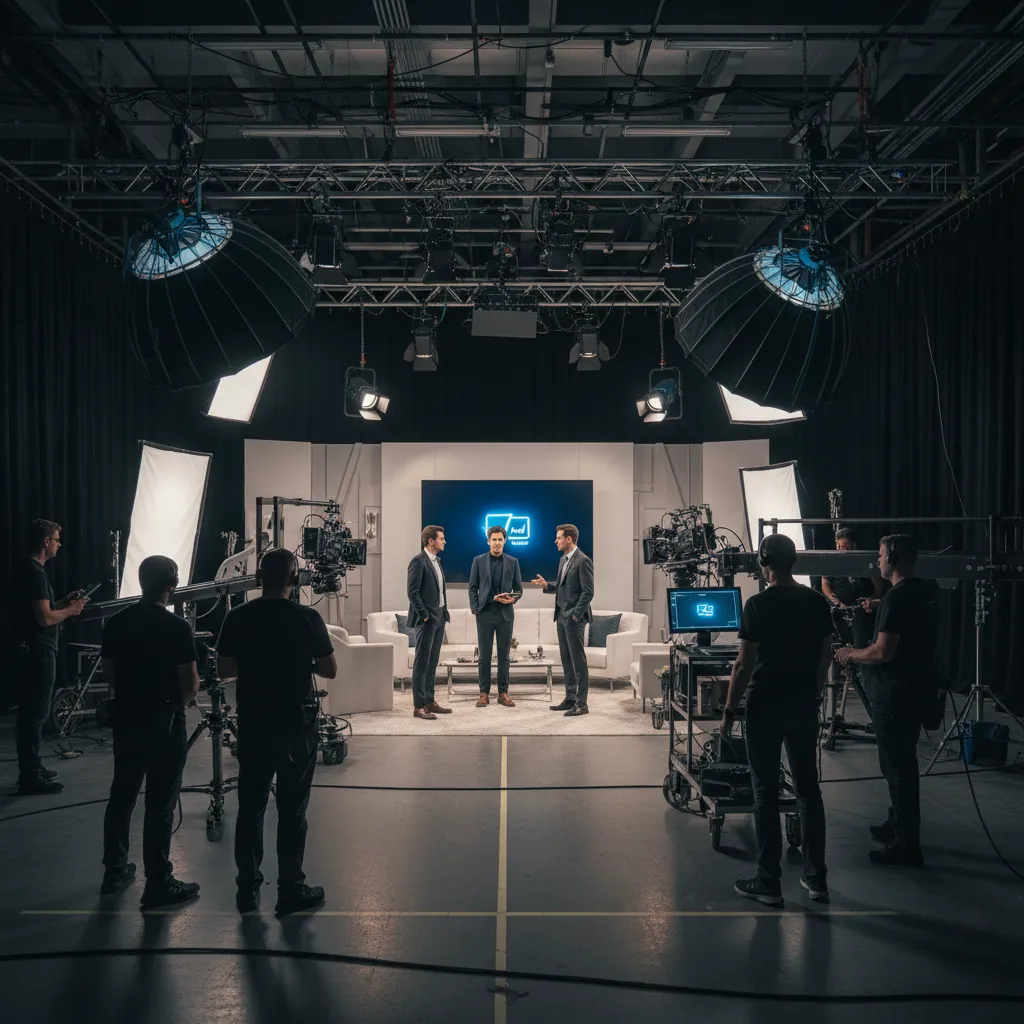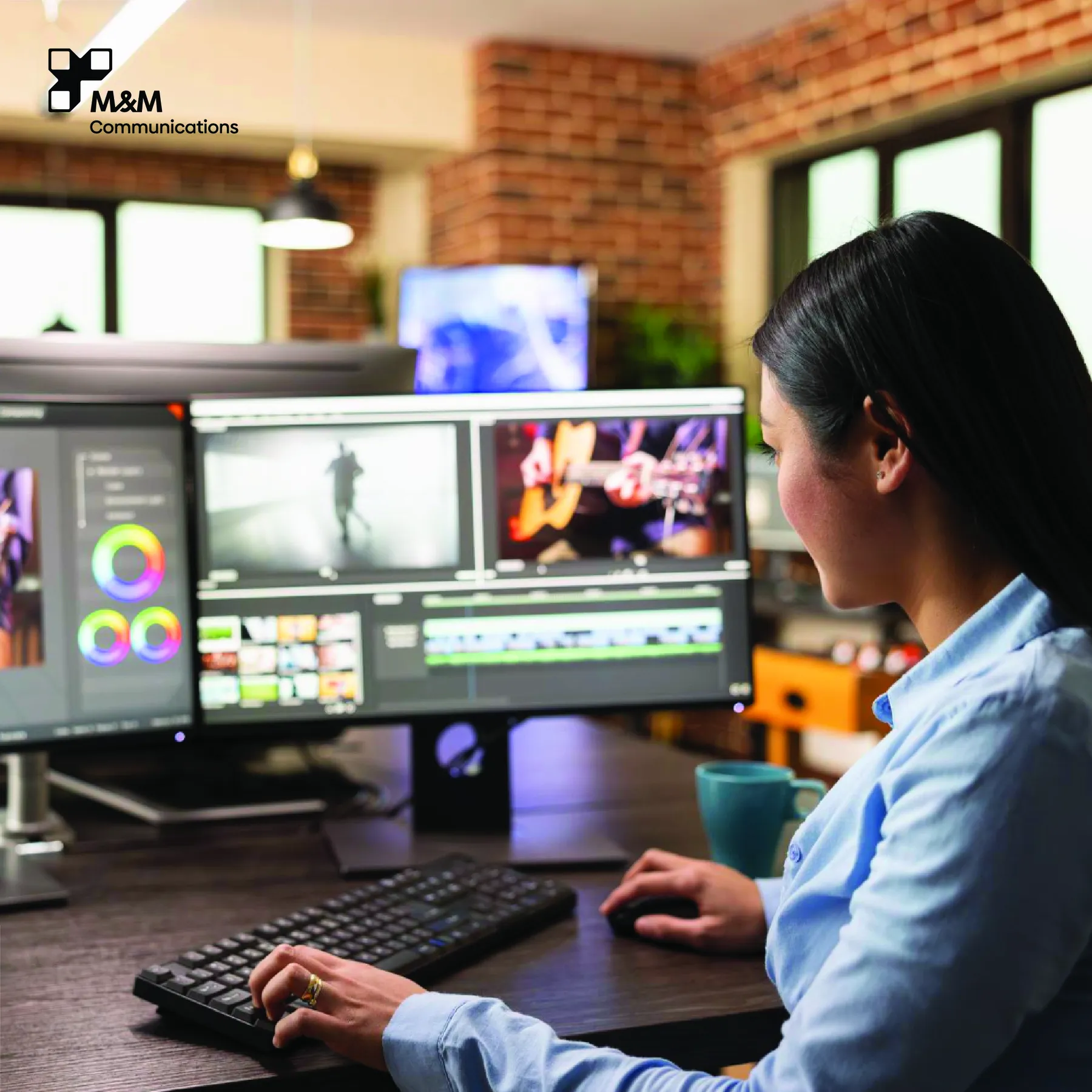
TVC Video Production: Professional A-Z Workflow for Commercial Success
Mastering TVC Production: From Concept to Screen
Television commercials remain one of the most powerful tools for brand storytelling, capable of creating lasting emotional connections with audiences. At M&M Communications, we've produced TVC campaigns for brands like Shiseido, The Body Shop, and Lotte Hotel Saigon, understanding that successful TVC production goes far beyond just creating beautiful visuals—it's about crafting inspirational and magical stories that resonate deeply with viewers.
Understanding the Modern TVC Landscape
Today's TVC production operates in a multi-platform environment where a single commercial might appear on television, digital platforms, and social media simultaneously. This reality demands a strategic approach that considers various aspect ratios, durations, and viewing contexts from the initial concept stage.
The most successful TVCs don't just showcase products—they create emotional experiences that viewers remember long after the commercial ends. This aligns perfectly with our philosophy at M&M Communications: we don't try to persuade customers to buy your brand's products through aggressive tactics. Instead, we emphasize their experiences when choosing you, creating connections that go beyond transactional relationships.
Pre-Production Phase: Foundation of Success
Strategic Brief Development
Every successful TVC begins with a comprehensive brief that answers crucial questions: What specific emotion should the commercial evoke? Who is the target audience, and what motivates them? What competitive advantages need highlighting? What cultural nuances should be considered for the Vietnamese market?
The brief should include target demographics, key messaging, tone and style preferences, budget parameters, and distribution channels. This document becomes the North Star throughout the entire production process.
Concept Development and Storytelling Framework
Develop 3-5 distinct creative concepts that approach the brief from different angles. Each concept should include a clear narrative arc, visual treatment description, and explanation of how it achieves the strategic objectives.
Strong TVC concepts often follow proven storytelling structures: problem-solution narratives, transformation stories, slice-of-life scenarios, or aspirational lifestyle portrayals. The key is ensuring the story feels authentic and relevant to your target audience.
Scriptwriting and Storyboard Creation
Transform chosen concepts into detailed scripts that specify dialogue, voice-over, and action descriptions. Include timing notes for 15, 30, and 60-second versions, as modern campaigns often require multiple durations.
Create comprehensive storyboards that visualize every shot, camera angle, and transition. This planning stage saves significant time and budget during production while ensuring all stakeholders share the same vision.
Casting and Talent Selection
Professional Casting Process
Successful casting goes beyond finding attractive faces—it's about discovering talent that embodies your brand values and connects authentically with your target audience. Consider cultural representation, age demographics, and authentic chemistry between cast members.
For the Vietnamese market, consider whether to use local talent, international talent, or a mix. Local talent often creates stronger emotional connections with Vietnamese audiences, while international talent might enhance premium positioning.
Working with Professional Actors vs. Real People
Professional actors bring technical skills and reliability, while real customers or employees offer authentic emotions and genuine brand connections. The choice depends on your brand positioning, budget, and the level of performance complexity required.
Location Scouting and Set Design
Strategic Location Selection
Locations should enhance your story while reflecting your brand's personality. Urban environments might convey modernity and progress, while natural settings could emphasize authenticity and wellness. Consider logistics: power availability, sound conditions, permit requirements, and backup options for weather-dependent shoots.
For Vietnamese productions, be aware of location permits, especially in Ho Chi Minh City and Hanoi. Build relationships with location managers who understand local regulations and can facilitate smooth production processes.
Production Design and Visual Aesthetics
Every visual element should reinforce your brand message. Color palettes should align with brand guidelines while creating appropriate mood and atmosphere. Props, wardrobe, and set decoration must feel authentic to the story while subtly reinforcing brand values.
Professional Equipment and Technical Setup
Camera and Lens Selection
Modern TVC production benefits from high-resolution cameras that capture stunning detail while maintaining efficient workflows. Popular choices include RED cameras for high-end productions, Sony FX series for versatility, or Canon C-series for reliable performance.
Lens selection dramatically impacts visual storytelling. Prime lenses offer superior image quality and creative control, while zoom lenses provide flexibility for complex scenes. Consider specialty lenses like macro for product details or telephoto for intimate close-ups.
Lighting Equipment and Techniques
Professional lighting transforms ordinary scenes into cinematic experiences. Essential equipment includes LED panels for consistent color temperature, softboxes for flattering portraits, and practical lights for natural-looking illumination.
Master key lighting techniques: three-point lighting for traditional setups, natural light enhancement for authentic feel, and dramatic lighting for emotional impact. Understanding how lighting affects mood enables you to reinforce your commercial's emotional objectives.
Direction and Performance Management
Working with Talent
Effective direction requires clear communication, patience, and the ability to coax authentic performances from talent. Provide context about the brand story and character motivations. Demonstrate desired emotions or actions when verbal direction isn't sufficient.
Create a comfortable environment where talent feels safe to take creative risks. Multiple takes allow exploration of different interpretations, but efficient scheduling prevents fatigue that can negatively impact performance quality.
Managing Client Expectations During Production
Keep clients informed about progress while managing their involvement. Designate specific review points where client feedback is most valuable. Explain technical decisions in terms of creative objectives rather than technical specifications.
Post-Production Workflow Excellence
Editorial Process and Storytelling
Post-production begins the moment cameras stop rolling. Organize footage systematically, create rough cuts quickly to identify any production gaps, and focus on pacing that maintains viewer engagement throughout the entire duration.
The edit should enhance the story told during production, not attempt to create entirely new narratives. Use cutting rhythm, music, and sound design to amplify emotional beats established during filming.
Color Grading and Visual Enhancement
Professional color grading transforms raw footage into polished commercial content. Establish consistent color palettes that reinforce brand identity while enhancing the overall visual impact. Consider different versions for different platforms—television broadcast standards differ from digital platform requirements.
Audio Post-Production
Clear, professional audio separates amateur from professional content. This includes dialogue clarity, music selection and mixing, sound effects integration, and voice-over recording. Audio should support and enhance the visual story without overwhelming it.
Brand Compliance and Quality Control
Maintaining Brand Consistency
Ensure all visual and audio elements align with established brand guidelines. This includes logo placement, color usage, typography, and messaging tone. Create detailed brand compliance checklists to ensure consistency across all deliverables.
Version Control and Asset Management
Professional TVC production generates numerous versions for different platforms and durations. Maintain organized file structures, clear version naming conventions, and comprehensive asset databases for efficient project management and future reference.
Distribution and Platform Optimization
Multi-Platform Delivery
Modern TVC campaigns require multiple format deliverables: traditional 16:9 for television and YouTube, 1:1 square for Instagram feeds, and 9:16 vertical for Stories and TikTok. Plan these formats during pre-production to maximize content efficiency.
Technical Specifications
Different platforms have specific technical requirements for optimal performance. Understand broadcast standards, streaming platform specifications, and social media requirements to ensure your content displays correctly across all intended channels.
Measuring TVC Success
Performance Metrics
Track brand awareness lift, purchase intent changes, website traffic increases, and social media engagement following TVC campaigns. Use attribution modeling to understand how TVC exposure influences customer behavior across multiple touchpoints.
ROI Calculation
Calculate TVC ROI by measuring direct response metrics, brand value improvements, and long-term customer acquisition costs. Consider both immediate sales impact and longer-term brand equity building when evaluating campaign success.
Working with Professional TVC Production Partners
Successful TVC production requires extensive expertise, professional equipment, and industry relationships. Consider partnering with experienced agencies like M&M Communications that bring proven processes, creative expertise, and technical capabilities to ensure your TVC campaign achieves maximum impact.
Conclusion: Crafting Memorable Commercial Experiences
Professional TVC production combines strategic thinking, creative storytelling, technical expertise, and flawless execution. The most successful commercials create emotional connections that extend far beyond the viewing experience, building lasting relationships between brands and customers.
At M&M Communications, we understand that effective TVC production isn't about creating the most expensive commercial—it's about crafting inspirational and magical stories that resonate with your audience's deepest needs and desires. Through careful planning, professional execution, and strategic optimization, TVC campaigns can become powerful catalysts for business growth and brand building.
Remember, great TVCs don't just inform or persuade—they inspire, connect, and create lasting emotional bonds that turn viewers into loyal customers and brand advocates.






